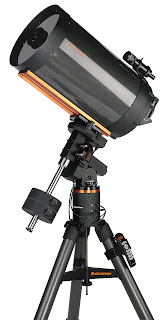 The Very Large Telescope array (VLT) is the flagship facility for European astronomy at the beginning of the third Millennium. It is the world’s most advanced optical instrument, consisting of four Unit Telescopes with main mirrors of 8.2m diameter and four movable 1.8m diameter Auxiliary Telescopes. The telescopes can work together, in groups of two or three, to form a giant ‘interferometer’, the ESO Very Large Telescope Interferometer, allowing astronomers to see details corresponding to a much larger telescope.
The Very Large Telescope array (VLT) is the flagship facility for European astronomy at the beginning of the third Millennium. It is the world’s most advanced optical instrument, consisting of four Unit Telescopes with main mirrors of 8.2m diameter and four movable 1.8m diameter Auxiliary Telescopes. The telescopes can work together, in groups of two or three, to form a giant ‘interferometer’, the ESO Very Large Telescope Interferometer, allowing astronomers to see details corresponding to a much larger telescope.The 8.2m diameter Unit Telescopes can also be used individually. With one such telescope, images of celestial objects as faint as magnitude 30 can be obtained in a one-hour exposure. This corresponds to seeing objects that are four billion (109) times fainter than what can be seen with the unaided eye.
The large telescopes are named Antu, Kueyen, Melipal and Yepun.
Telescopes and Instruments
The VLT instrumentation programme is the most ambitious programme ever conceived for a single observatory. It includes large-field multi-channel imagers, adaptive optics corrected cameras and spectrographs, as well as high-resolution and multi-object spectrographs and covers a broad spectral region, from deep ultraviolet (300 nm) to mid-infrared (24 µm) wavelengths.
The 8.2m diameter Unit Telescopes are housed in compact, thermally controlled buildings, which rotate synchronously with the telescopes. This design minimises adverse effects on the observing conditions, for instance from air turbulence in the telescope tube, which might otherwise occur due to variations in the temperature and wind flow.
The first of the Unit Telescopes, ‘Antu’, went into routine scientific operations on 1 April 1999. Today, all four Unit Telescopes and all four Auxiliary Telescopes are operational. Already, the VLT has made an very significant impact on observational astronomy.
The VLT Interferometer
Individual telescopes of the VLT observatory can currently work togehter, in groups of two or three, as the ‘VLT Interferometer’ (VLTI), so that they act as a single, giant telescope, as large as the entire group. Up to 25 times finer detail can be observed than with the individual telescopes.
In the VLT Interferometer, the light beams are combined using a complex system of mirrors in underground tunnels. To do this, the light paths must be kept equal to less than 1/1000 mm. The VLTI can reconstruct images with an angular resolution of milliarcseconds, which means that in principle it could distinguish the two headlights of a car on the Moon.
Moving Telescopes
Although the four 8.2m diameter Unit Telescopes can be combined in the VLTI, most of the time these large telescopes are used for other purposes. They are therefore only available for interferometric observations for a limited number of nights every year.
In order to exploit the VLTI each night, four dedicated ‘Auxiliary Telescopes’ (ATs) of 1.8m diameter are available. The ATs are mounted on tracks and can be moved between precisely defined observing positions. From these positions, their light beams are combined in the VLTI.
The ATs are very unusual telescopes. In their ultra-compact protective domes, they carry their own electronics, ventilation, hydraulics and cooling systems. Each AT has a transporter that lifts the telescope and moves it from one position to the other. Almost like a snail, it moves around with its own housing.





